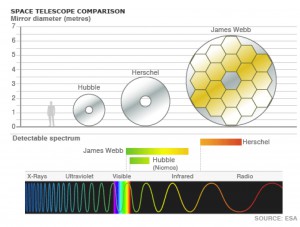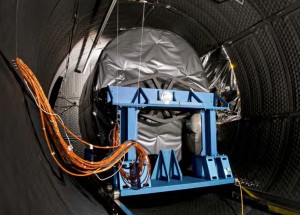D. Barrado
Just arrived from London from a one-day meeting of the MIRI consortium, I cannot avoid looking back with pride at our achievements, in this longer than 10 years challenge.
The Mid-Infrared Instrument (MIRI) is one of the four instruments which will fly on the James Webb Space Telescope, the next big observatory NASA, the European Space Agency (ESA) and the Canadian Space Agency (CSA) will put in orbit. This will happen in 2018, but a lot of work has to be done before then (the integration of the telescope and its instruments and additional verifications). These three organizations started to think about a new spacecraft just right after the launch of the famous Hubble Space Telescope, twenty years ago.

The initial concept for MIRI was developed at the end of that decade, and the go-ahead for it was granted in 2004. Contrary to the other instruments, which are led by NASA, ESA or CSA, MIRI was proposed by a Euro-American team led my Gillian Wright (principal investigator of the European Consortium) and George Rieke (the American counterpart). Gillian and the project manager (John Thatcher) have provided real inspiration and have been the real driving force for the whole consortium, a difficult task when taking into account the large number of scientist and engineers involved, located at different institutions and countries (Belgium, Denmark, France, Germany, Ireland, Low Countries, Spain, Sweden, Switzerland, and United Kingdom) and with different corporate cultures and traditions. Each institution has clearly delineated responsibilities, but to keep the whole team working together over the years, solving challenging technological problems, and keeping everything within budget, is not a simple task. I would dare to call it herculean, a very effective example for other endeavors. A similar challenge was to maintain a fluid and open collaboration with our American colleagues.
MIRI performance has been verified during the last months at the Rutherford Appleton Laboratory, in UK. Very recently, ESA and NASA has reviewed and accepted the instrument and it will be shipped to USA at the end of this month. For the final overview, and to celebrate this milestone, the Euro-American consortium has gathered in London, In addition, the meeting has been very useful to define the next steps.

My own involvement started in 2002, as principal investigator in the Spanish space agency (Instituto Nacional de Técnica Aeroespacial, INTA). We have built the MIRI Telescope Simulator (in close collaboration with the Spanish High Research Council, CSIC), an optical bench designed mimic the telescope and to verify the instrument on the ground under real conditions. As I have said, this has been achieved and we can proudly said we have built an outstanding machine to cutting-edge science and wonderful discoveries. However, we will not see the first data after six months after its launch by an Ariane V rocket. Indeed, space missions take a lot of time! but I can confess that the investment has been worth it.
As a summary, an outstanding example of transatlantic cooperation, which transcend the Euro-American friendship since the JWST, as other scientific adventures, will be open to anyone on the globe: scientist to carry out each research programs, or ordinary people who will enjoy the amazing sights of the universe or the technological advances this type of missions provide.
PD: More at BBC News: